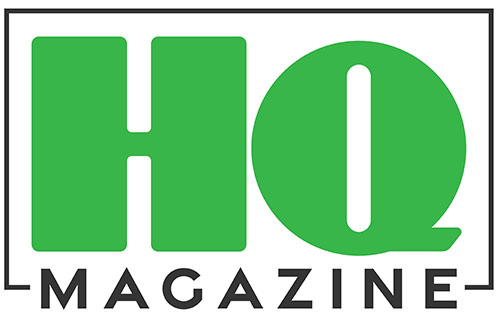 Oh, Canada. North America’s ‘other white meat.’ The great frozen paradise of the north, land of venison, Slurpees, mounted police, the aurora borealis, and a head of state who isn’t orange. And come October 17 of this year, the land of legal weed. Wait, what? Legal weed? Yes, you read that correctly. But don’t call it weed. That’s pejorative.
Oh, Canada. North America’s ‘other white meat.’ The great frozen paradise of the north, land of venison, Slurpees, mounted police, the aurora borealis, and a head of state who isn’t orange. And come October 17 of this year, the land of legal weed. Wait, what? Legal weed? Yes, you read that correctly. But don’t call it weed. That’s pejorative.
Of course, Canada beat us to it. Face it; Canada’s always just a little cooler than us, a little more progressive and a little less—well—dickish. If the U.S. is the star quarterback of the high school, Canada is his quiet, bookish younger brother, not as popular, but far more pleasant to be around. The U.S. can kick ass, raise hell and throw a hell of a bomb, but Canada can kick back and nerd out with you about your vinyl collection and the macabre brilliance of Leonard Cohen. The U.S. likes to make fun of Canada, mostly because he’s mild-mannered, friendly to the dweebs, and articulately spoken, but secretly, the U.S. wishes he could be Canada, or at least more like him. When no one’s around, he asks Canada what bands he should play in the car when he’s taking a girl out, along with what authors he should pretend to have read. Canada’s sorry about Nickelback, though. That was just the aftermath of some gas station poutine washed down with too much Molson Ice.
 But OK, so our friends to the north have legalized cannabis. Good for them. Why do we care? We’re changing up our vacation plans, yes, but besides that, why should Canada’s actions matter to us? Well, about that . . .
But OK, so our friends to the north have legalized cannabis. Good for them. Why do we care? We’re changing up our vacation plans, yes, but besides that, why should Canada’s actions matter to us? Well, about that . . .
First, this isn’t just a state like Washington or Colorado thumbing its nose at the feds and doing what it wants. This is a sovereign nation legalizing at the federal level, with the full participation and compliance of the provinces (that’s Canadian for ‘states.’) This means inter-provincial commerce, hassle-free banking, sanctioned medical studies, and accurate national statistics on legalization’s effect. These are important elements to follow, in a sense, a series of tests to help us understand how a legal market might eventually work here. Obviously, we could have gathered a lot of this from Uruguay, but let’s face it; the old white guys in Washington don’t pay attention to Latin America unless there is oil, communists or cocaine involved.

Second, and equally important, one more sovereign nation has willfully breached the U.N. treaties on controlled substances. Why does this matter? Because, believe it or not, those treaties are the invisible hurdles to legalization here at home. Canada’s move is, essentially, an act of civil disobedience on the international level, and if you’ve studied history, you know that civil disobedience is weapon number one in the arsenal of progress.
Finally, Bill C-45 (Canada’s legalization bill) contains provisions governing accessories, and there is no denying that our two markets are intertwined. Otherwise, CHAMPS Toronto would’ve never happened.
So, pay attention; this is important. Luckily for you, we read the whole bill, so you don’t have to. Keep in mind, though, that this is barely the tip of the iceberg; just the most pertinent points in a bill that’s over 100 pages. THIS IS NOT LEGAL ADVICE.
- Adults 18 years of age and older can legally carry up to 30 grams (that’s just over one ounce) of dried cannabis, or the relative equivalent of concentrates, edibles, etc.
- Adults 18 years of age and older can cultivate up to four plants. However, that’s also per household, meaning that two adults in one house aren’t allowed to grow eight plants. The number is still four. (Provincial law on this subject varies; Quebec and Manitoba are banning home cultivation.)
- Extraction using a flammable solvent such as butane is a big no-no.
- While it is highly illegal to sell cannabis to a minor, under the new legislation, possession by a minor is only prosecutable if it’s over five grams. The intent is to avoid over-prosecuting kids for minor possession, but the language of the law has been a useful scare tactic for Canada’s remaining prohibitionists.
- The marketing of cannabis and cannabis accessories will be extremely limited. No giveaways, no contests, no drawings, no freebies of any kind, no endorsements, no testimonials, no packaging or labels with the likeness of animals, characters or persons, no associating with glamor, recreation, excitement, vitality, etc., no marketing of any kind that could appeal to minors; basically, no marketing of any kind, save the basic, dry facts of the product. This is important to keep in mind, as it eliminates a large swathe of the brands and accessories currently on the market. All of those accessories with Cheech and Chong, Rick and Morty etc. will likely have to be pulled from the shelves. So too, will brands such as Marley Naturals, Amber Rose Kandypens, Snoop Dogg’s G-Pen, et al.
- The restrictions highlighted above in Item 5 do not apply to business-to-business commerce. That means HQ Magazine and the contents therein are still legal in Canada (hooray!).
- Paragraph 139 of the bill leaves the government’s power to issue further regulations pretty much open-ended. Therefore, the rules listed here are only the beginning.












